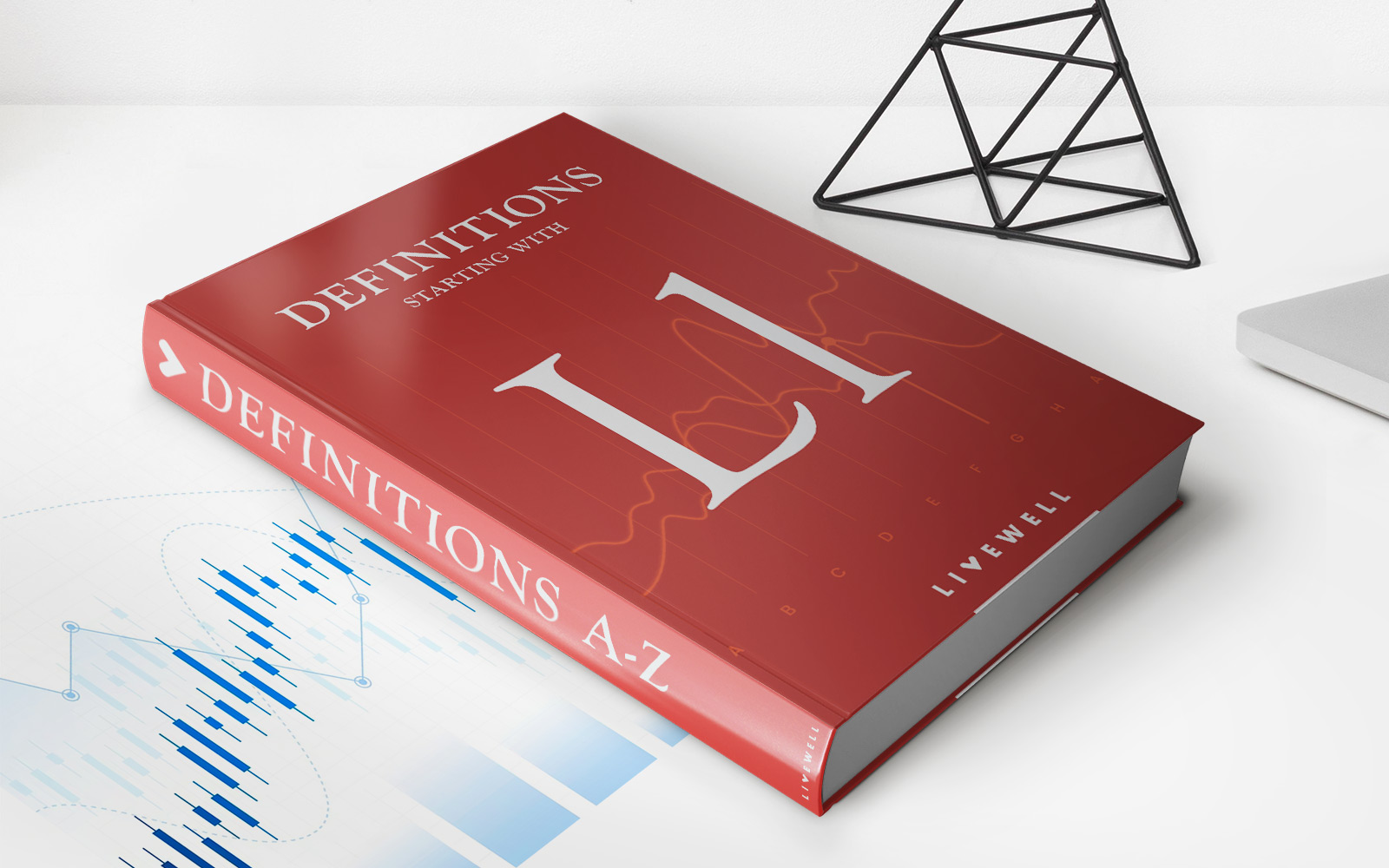

Finance
How Do You Take Out Student Loans
Published: January 20, 2024
Looking for ways to finance your education? Learn how to take out student loans and secure your future with the help of our comprehensive guide.
(Many of the links in this article redirect to a specific reviewed product. Your purchase of these products through affiliate links helps to generate commission for LiveWell, at no extra cost. Learn more)
Table of Contents
Introduction
Obtaining a higher education is often crucial for career advancement and personal growth. However, the cost of tuition and other expenses can be a significant obstacle for many individuals. This is where student loans come into play.
Student loans are financial tools designed to help students cover the costs of education, including tuition, textbooks, housing, and other related expenses. These loans provide a way for students to bridge the gap between the funds they have and the funds they need to complete their studies.
In this article, we will explore the ins and outs of student loans, providing you with a comprehensive understanding of how they work, the different types available, and the process of applying for them. We will also discuss important factors such as interest rates, repayment options, managing loan debt, and potential loan forgiveness programs.
Whether you are a prospective student, a current student, or a graduate facing the reality of loan repayment, this article will serve as a valuable resource to help you navigate the world of student loans and make informed decisions regarding your education and financial future.
Understanding Student Loans
Before delving into the specifics of different types of student loans and the application process, it is essential to understand the fundamentals of these financial instruments. A student loan is essentially a sum of money borrowed from a financial institution or the government to pay for higher education expenses.
Unlike other types of loans, student loans typically have lower interest rates and more flexible repayment options. This is because they are specifically designed to help students access education and eventually enter the workforce.
One key aspect of student loans to be aware of is that they are considered an investment in oneself. By acquiring a higher education, individuals are better-equipped to find well-paying jobs and, theoretically, repay their loans over time. However, it is crucial to consider the potential financial burden of student loan debt and to carefully assess your ability to repay the loan before borrowing.
Student loans can be both federal and private. Federal loans are backed by the government and often come with more favorable terms and conditions. On the other hand, private loans are offered by banks, credit unions, and other financial institutions and typically involve stricter eligibility criteria and higher interest rates.
It is important to note that student loans are legally binding agreements, meaning borrowers are obligated to repay the borrowed amount along with any applicable interest and fees. Failure to repay student loans can have severe consequences, including damage to credit scores and possible legal actions against the borrower.
In the next sections, we will delve into the types of student loans available, the eligibility requirements, and the process of applying for them.
Types of Student Loans
When it comes to student loans, there are two main categories: federal loans and private loans. Each type of loan has its own features, benefits, and considerations, so it’s important to understand the differences between them.
Federal Student Loans: These loans are offered by the U.S. Department of Education and are typically more accessible and affordable than private loans. Here are the main types of federal student loans:
- Direct Subsidized Loans: These loans are available to undergraduate students with demonstrated financial need. The government pays the interest on these loans while the borrower is in school and during certain deferment periods.
- Direct Unsubsidized Loans: These loans are available to both undergraduate and graduate students. Unlike subsidized loans, interest accrues on unsubsidized loans while the borrower is in school. It is possible to defer payment until after graduation or to make interest payments while in school.
- Direct PLUS Loans: These loans are available to graduate students and parents of dependent undergraduate students. PLUS loans have higher interest rates and require a credit check.
- Perkins Loans: These loans are available to undergraduate, graduate, and professional students with exceptional financial need. However, the Perkins Loan program is not currently accepting new borrowers as it has expired.
Private Student Loans: Private loans are offered by banks, credit unions, and other financial institutions. Unlike federal loans, these loans are not subsidized by the government and may have higher interest rates. Private loans typically require a credit check and may have more stringent eligibility criteria.
While federal loans are generally a preferred option due to their lower interest rates and greater flexibility, there are instances where private loans may be necessary to cover remaining tuition and expenses.
It is important to carefully research and consider the terms and conditions of any loan before proceeding. Understanding the types of student loans available will help you make an informed decision and choose the best option for your financial situation.
Federal Student Loans
Federal student loans are loans offered by the U.S. Department of Education to help students and their families finance higher education. These loans are generally considered more favorable due to their lower interest rates, flexible repayment options, and potential for forgiveness or discharge under certain circumstances.
There are several types of federal student loans available, each with its own eligibility criteria and benefits. Let’s explore the main types:
- Direct Subsidized Loans: These loans are available to undergraduate students with demonstrated financial need. The government pays the interest on these loans while the student is enrolled in school at least half-time, during the grace period, and during any authorized deferment periods.
- Direct Unsubsidized Loans: These loans are available to both undergraduate and graduate students. Unlike subsidized loans, interest accrues on unsubsidized loans while the student is enrolled in school. Students have the option to defer interest payments while in school.
- Direct PLUS Loans: These loans are available to graduate students and parents of dependent undergraduate students. PLUS loans have a higher interest rate than other federal loans and require a credit check. Students need to submit the Free Application for Federal Student Aid (FAFSA) to be eligible for PLUS loans.
- Perkins Loans: Perkins loans were federally funded loans offered to students with exceptional financial need. However, the Perkins Loan program expired in September 2017, and no new borrowers are being accepted. Existing Perkins Loan borrowers can still receive the benefits and repayment options associated with these loans.
It is important to note that federal student loans come with a variety of repayment options, including standard repayment, extended repayment, income-driven repayment, and loan forgiveness programs. Income-driven repayment plans base the monthly payment on the borrower’s income and family size, and forgiveness programs may be available for borrowers who meet certain criteria, such as working in a public service profession or making payments for a specific number of years.
When considering federal student loans, it is crucial to submit the FAFSA to determine eligibility and to carefully review the terms and conditions of the loan. Additionally, understanding the repayment options and potential forgiveness programs can help borrowers manage their loan debt effectively.
While federal student loans can be an excellent option for funding higher education, it is essential to borrow responsibly and only take out what is necessary to cover educational expenses. Keeping loan amounts manageable can greatly impact your financial well-being after graduation.
Private Student Loans
When federal student loans are insufficient to cover the cost of education, private student loans can be an alternative source of funding. Private loans are offered by banks, credit unions, and other financial institutions, and they fill the gap between the total cost of attendance and any other financial aid received.
Unlike federal student loans, private loans are not funded or guaranteed by the government. Instead, they are based on the borrower’s creditworthiness and may require a cosigner, such as a parent or guardian, who has a stronger credit history. Private loans typically have higher interest rates, which can result in higher repayment amounts over time.
Here are a few key points to consider about private student loans:
- Loan Eligibility: Private loan eligibility is based on credit score, income, and other factors. The requirements can vary between lenders, so it’s essential to review the specific criteria for each private loan option.
- Interest Rates and Terms: Private loan interest rates can be fixed or variable. Fixed interest rates remain the same throughout the life of the loan, while variable rates may change based on market conditions. Loan terms can also vary, usually ranging from five to 20 years.
- Repayment Options: Private loan repayment options may differ from federal loans. Some lenders may require immediate repayment of the principal and interest, while others may allow borrowers to defer payments until after graduation. It’s important to review the terms and conditions of the loan carefully.
- Loan Comparison: It’s crucial to compare loan options from different lenders to find the best interest rates, terms, and repayment options. Shopping around and getting quotes from multiple lenders can help borrowers secure the most favorable terms.
- Private Loan Risks: Borrowers should be aware of the potentially higher interest rates and fees associated with private loans. Additionally, private loans may lack the borrower protections and repayment options offered by federal student loans.
If considering a private student loan, it is important to thoroughly research and understand the terms and conditions of the loan. Reviewing the interest rates, repayment options, and potential fees will help borrowers make an informed decision and ensure they can manage the financial responsibility after graduation.
Before pursuing a private loan, it is generally recommended to exhaust all federal student loan options, scholarships, and grants. Federal loans often offer more favorable terms and borrower protections, making them a preferred choice for many students.
Eligibility for Student Loans
When it comes to eligibility for student loans, there are certain criteria that borrowers must meet in order to qualify for both federal and private loans. Meeting these requirements ensures that borrowers are able to responsibly manage their loan repayment in the future. Let’s explore the key eligibility factors:
- Enrollment Status: To be eligible for student loans, borrowers must be enrolled in an eligible educational institution on at least a half-time basis. This requirement applies to both federal and private loans.
- Citizenship or Legal Status: In the United States, federal student loans are only available to U.S. citizens, permanent residents, and eligible non-citizens. Private lenders may have their own policies regarding citizenship and legal status.
- Financial Need: Certain federal loans, such as subsidized loans, are need-based and require applicants to demonstrate financial need. Private loans typically do not have a need-based requirement, although a borrower’s creditworthiness may be considered.
- Credit History: Federal student loans do not require a credit check, and borrowers with no credit history or adverse credit can still qualify. However, private loans often consider credit history and may require a cosigner if the borrower has insufficient credit or a low credit score.
- Loan Limits: Federal and private loans have different loan limits. Federal loan limits are determined by factors such as dependency status and academic year, while private loan limits vary by lender and can be based on the cost of attendance.
- Academic Progress: Federal student loans require borrowers to maintain satisfactory academic progress, which includes meeting certain GPA and course completion requirements. Private lenders typically do not have academic progress requirements but may have different eligibility criteria.
It is important to note that eligibility requirements can vary between different loan programs and lenders. It is recommended to carefully review the specific criteria for each loan option and seek guidance from financial aid offices or loan servicers if needed.
Additionally, meeting the eligibility requirements does not automatically guarantee loan approval. Borrowers must still complete the necessary application process, provide required documentation, and adhere to any additional loan-specific requirements or deadlines.
Understanding the eligibility factors for student loans ensures that prospective borrowers can evaluate their own qualifications and choose the loan options that best suit their needs. It is crucial to assess eligibility and carefully consider the financial responsibilities associated with student loans before making borrowing decisions.
Applying for Student Loans
Applying for student loans involves a series of steps to ensure that borrowers can access the necessary funds to finance their education. Whether you’re considering federal loans or private loans, understanding the application process is crucial. Let’s explore the general steps involved in applying for student loans:
- Complete the FAFSA: For federal student loans, the first step is completing the Free Application for Federal Student Aid (FAFSA). The FAFSA is used to determine eligibility for federal financial aid programs, including grants, work-study, and loans. It collects information about your financial situation, such as income, assets, and family size.
- Receive a Student Aid Report (SAR): After submitting the FAFSA, you will receive a Student Aid Report (SAR) that summarizes the information provided. Review the SAR carefully for any errors or discrepancies, and make necessary corrections if needed.
- Review and Compare Offers: Once your FAFSA is processed, you will receive financial aid offers from schools you’ve applied to. These offers detail the types and amounts of aid you are eligible to receive, including any federal student loans. Review and compare these offers to make an informed decision about which school and loan options are most suitable for you.
- Accept the Loan: If you decide to accept a federal student loan, you will need to complete the required paperwork, such as signing a Master Promissory Note (MPN) and completing entrance counseling. These steps ensure that you understand the terms and obligations associated with the loan.
- Apply for Private Loans: If federal loans do not fully cover your educational expenses, you may consider applying for private loans. Research various lenders, compare interest rates and repayment terms, and select the private loan option that best suits your needs. Apply directly with the chosen lender and carefully follow their application instructions.
- Submit Required Documents: Along with your private loan application, you may be required to submit additional documentation, such as proof of income, proof of enrollment, or a cosigner’s information. Be prepared to provide these documents promptly to avoid any delays in loan processing.
- Receive Loan Approval: After completing the application process, your loan application will be reviewed by the lender. If approved, you will receive a loan approval notification with details regarding the loan amount, interest rate, and repayment terms.
It is essential to stay organized and meet any deadlines associated with the loan application process. Keep track of important documents, maintain open communication with your chosen lender or financial aid office, and promptly address any questions or concerns that arise.
By understanding and following the necessary steps, you can navigate the loan application process and secure the funding you need to pursue your education.
Interest Rates and Repayment Options
Interest rates and repayment options play a crucial role in managing student loans effectively. Understanding these factors helps borrowers make informed decisions and develop a plan for repaying their loan debt. Let’s explore interest rates and repayment options for student loans:
Interest Rates:
Interest rates determine the cost of borrowing and can significantly impact the total amount repaid over the life of the loan. Here are some key points to consider:
- Federal Loan Interest Rates: Federal student loan interest rates are set by the government and are typically fixed rates. These rates may vary based on the type of loan and the academic year in which the loan is disbursed. It is important to refer to the current federal student loan interest rates to understand the cost of borrowing.
- Private Loan Interest Rates: Private student loan interest rates are determined by the lender and can be fixed or variable. Interest rates for private loans are generally based on the borrower’s creditworthiness and may vary from lender to lender. It is essential to compare rates from different lenders to secure the most favorable terms.
Repayment Options:
Repayment options determine how borrowers will repay their student loans after leaving school. Here are some common repayment options:
- Standard Repayment: This is the most common repayment option, with fixed monthly payments over a specified term (typically 10 years for federal loans). Payments are designed to ensure the loan is fully repaid by the end of the term.
- Graduated Repayment: Graduated repayment starts with lower payments that increase over time (usually every two years). This option is suitable for borrowers who expect their income to grow steadily over time.
- Income-Driven Repayment (IDR): Income-driven repayment plans tie the monthly payment amount to the borrower’s income, family size, and other factors. These plans adjust the payment amount to ensure it remains affordable based on the borrower’s financial situation.
- Extended Repayment: Extended repayment extends the repayment term beyond the standard 10-year period, resulting in lower monthly payments. This option is typically available for borrowers with high loan balances.
- Loan Forgiveness: Certain federal loans may qualify for loan forgiveness programs, such as Public Service Loan Forgiveness (PSLF) or Teacher Loan Forgiveness. These programs forgive the remaining loan balance after the borrower meets specific requirements, such as working in a qualifying public service job for a designated period.
It is important to consider the long-term financial implications of the chosen interest rates and repayment options. Borrowers should assess their ability to make monthly payments, their career trajectory, and any potential future changes that may affect their ability to repay the loans.
By understanding interest rates and repayment options, borrowers can make informed decisions that align with their financial goals and abilities. It is advisable to consult with loan servicers or financial aid offices to fully comprehend the available options and choose the most suitable repayment strategy for individual circumstances.
Managing Student Loan Debt
Managing student loan debt is a critical aspect of maintaining financial stability and successfully repaying the loans. To effectively manage loan debt, borrowers should consider the following strategies:
Create a Budget:
Developing a budget is essential for managing loan debt and overall financial well-being. This involves tracking income and expenses to ensure that loan payments are prioritized and accounted for. By creating a budget, borrowers can identify areas where they can reduce spending and allocate more funds towards loan repayment.
Live within Means:
Avoiding unnecessary expenses and living within one’s means can prevent unnecessary debt accumulation. This means making practical choices, such as renting a more affordable apartment or minimizing discretionary spending. By living modestly, borrowers can reduce financial stress and have more resources available to allocate towards loan repayment.
Explore Repayment Options:
Exploring different repayment options can help borrowers manage their loan debt effectively. Federal loans offer various repayment plans, including income-driven repayment options that can help align monthly payments with income levels. It is important to research and understand the benefits and implications of each repayment plan to choose the one that best fits individual circumstances.
Pay More than the Minimum:
To accelerate loan repayment, consider paying more than the minimum monthly payment whenever possible. By making additional payments towards the principal balance of the loan, borrowers can potentially reduce the overall interest paid and shorten the repayment period. However, it is important to check with the loan servicer to ensure that additional payments are properly applied to the principal balance.
Emergency Fund:
Building an emergency fund is crucial for handling unexpected financial setbacks without relying on credit cards or loans. By setting aside a portion of income in a separate savings account, borrowers can have a safety net in case of emergencies, reducing the need to take on additional debt.
Stay Informed:
It is essential for borrowers to stay informed about their loan terms, repayment options, and any changes in policies or regulations. Regularly reviewing loan statements and staying in touch with the loan servicer can help borrowers stay on track, address any concerns, and take advantage of available resources and programs.
Seek Assistance if Needed:
If struggling to manage loan debt, actively seek assistance instead of ignoring the problem. There are resources available, such as loan counseling services or financial aid offices, that can provide guidance and support in managing loan repayment.
Implementing effective strategies for managing student loan debt can help borrowers stay on track, reduce financial stress, and successfully repay their loans. By taking proactive steps towards debt management, borrowers can work towards achieving financial freedom and building a solid foundation for their future.
Loan Forgiveness and Repayment Assistance Programs
Loan forgiveness and repayment assistance programs can provide significant relief for borrowers struggling to repay their student loans. These programs aim to alleviate the financial burden while rewarding individuals who meet specific criteria. Here are some important programs to be aware of:
Public Service Loan Forgiveness (PSLF):
The Public Service Loan Forgiveness program is designed for borrowers who work full-time for qualifying employers, such as government or nonprofit organizations. After making 120 qualifying monthly payments while employed in a public service role, the remaining loan balance is eligible for forgiveness. Borrowers must meet specific requirements regarding loan type, repayment plan, and employment to qualify for PSLF.
Teacher Loan Forgiveness Program:
The Teacher Loan Forgiveness program is targeted at teachers who work in low-income schools or educational service agencies. Eligible teachers may have a portion of their Federal Direct Loans forgiven after five consecutive years of teaching. The amount of forgiveness depends on the subject taught and the level of certification.
Income-Driven Repayment Forgiveness:
Borrowers enrolled in an income-driven repayment plan may be eligible for forgiveness of their remaining loan balance after 20 or 25 years of qualifying payments, depending on the repayment plan. It is important to note that the forgiven amount may be considered taxable income, so borrowers should plan accordingly for potential tax obligations in the future.
State-Based Loan Forgiveness Programs:
Many states offer loan forgiveness programs to incentivize professionals to work in high-demand fields or underserved areas. These programs may include forgiveness of a portion of the borrower’s student loans in exchange for a specific period of service. Eligibility criteria vary by state and profession.
Repayment Assistance Programs:
Some employers and organizations offer repayment assistance programs to help employees pay off their student loans. These programs may provide direct financial support or matching contributions towards loan repayment. It is worth exploring whether an employer or organization offers such assistance and the eligibility requirements to take advantage of these benefits.
It is crucial to research and thoroughly understand the specific requirements and conditions of loan forgiveness and repayment assistance programs. Borrowers should carefully review the program guidelines, maintain documentation of eligibility, and stay in compliance with program requirements to maximize the benefits of these opportunities.
Keep in mind that while loan forgiveness and repayment assistance programs can provide significant relief, they may have specific limitations and may not cover the full loan amount. It is wise to consider these programs as part of an overall strategy for managing student loan debt and to explore other options for repayment and loan management.
Conclusion
Student loans are an integral part of many individuals’ educational journeys, allowing them to pursue higher education and invest in their future. Understanding the nuances of student loans, from the types available to the application process and repayment options, is crucial for making informed decisions and effectively managing loan debt.
Federal student loans offer favorable terms, such as lower interest rates and flexible repayment options, making them a preferred choice for many borrowers. Private student loans can fill the gap when federal loans are not sufficient, but they often come with higher interest rates and stricter eligibility criteria. It is essential to carefully consider the pros and cons of each type of loan before borrowing.
Managing student loan debt starts with developing a budget, living within one’s means, and exploring repayment options that align with individual circumstances. Paying more than the minimum monthly payment whenever possible and taking advantage of loan forgiveness and repayment assistance programs can significantly alleviate the financial burden.
Ultimately, responsible borrowing, careful financial planning, and proactive loan management will pave the way for a successful repayment journey. It is important to stay informed, seek assistance when needed, and continuously evaluate personal financial goals in relation to loan repayment strategies.
Remember, student loans are an investment in education and future opportunities. By understanding the ins and outs of student loans and implementing strategies to manage debt effectively, borrowers can navigate the path to financial freedom while pursuing their educational aspirations.














